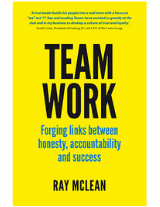High employee turnover has become a stark reality for many organisations today. Employees just don’t seem to stay with companies for quite as long as they used to. Consider these stats:
- Research conducted by job posting site SEEK found that 47 per cent of Australians are considering leaving their job this year.
- A report by PwC discovered that the average millennial worker intends to have five or more employers throughout their careers.
- LinkedIn determined that in 2015 alone, 75,000 Australians left their jobs and there was a dramatic increase in the number of professionals looking to move on from their current company.
The numbers speak volumes. Employees are more difficult to retain than ever and because of this leaders must make a concentrated effort to keep them. The process involves identifying why employees leave in the first place and then creating strategies to address these issues. Let’s take a closer look.
Why do employees leave?
Every staff member will have different reasons for leaving a company and moving onto their next career opportunity. However, there are some common denominators. Whether it’s a lack of professional progression or dissatisfaction about work-life balance, it’s important to note the trends. A study by CareerBuilder found that:
- 58 per cent of respondents vacated their position as a result of general dissatisfaction and a lack of engagement
- 45 per cent of professionals left a job due to a lack of advancement opportunities
- 39 per cent resigned because of a poor work-life balance
- 39 per cent left because they felt they were overqualified for their position
- 39 per cent reported their resignation was due to extreme levels of stress
It can be one of these factors or a mix-and-match mashup of all the issues mentioned above. The bottom line is that something needs to be done to address the problems that cause employees to leave. Through years of working with different organisations, Leading Teams knows that poor employee retention is nearly always linked to poor leadership.
Whether it’s at an executive or a managerial level, employees won’t stay with companies that don’t have the right people leading the charge. Leaders need to take the initiative to address the issues mentioned above and dig deeper into what they can do to make employees stick around.
The good news is: The steps leaders need to take are relatively straightforward and there are a lot of small ways to ultimately improve employee retention in the long run.
How to retain Australia’s top talent
1. Have genuine conversations with your team
Every meaningful change starts by having genuine conversations with your team members. Don’t wait until your staff is unsettled to have a chat, schedule regular conversations with each of your employees to gauge how they are feeling. What is making them happy? What isn’t?
This has a two-fold benefit. First, you’ll naturally create a stronger relationship with your team by having these regular catch-ups. Second, you can be proactive in your approach to retaining your team members. If you sense someone is considering jumping ship, get to the bottom of the problem and do what you can to make them want to stay.
Every meaningful change starts by having genuine conversations with your team members.
2. Create appealing development opportunities
Employees today want more from their employers. They don’t just want to come in, do their job and clock out, they want to grow during the process.
PwC research found that young professionals prefer learning and development opportunities to monetary rewards. To keep your best team members around, you want to make sure you are offering chances for them to grow their skill sets and use them in the workplace. This has the added benefit of bringing new levels of expertise into your office!
3. Pay close attention to exit interviews
When it comes to remedying employee turnover, your best tool is the exit interview. This is a chance to have a completely honest conversation with your departing team member – make the most of the opportunity.
Ask questions that better help you identify the problems that are unique to your organisation. Determine whether or not there were realistic actions to be taken which could have made your employee stay. Bottom line: Don’t take exit interviews lightly, there is a lot to be gained from these conversations.
At Leading Teams, we know building a team of loyal employees stems from creating strong relationships and understanding the needs of your staff. To learn more about how we can help with employee retention, give us a call on 03 9654 3744 today.






